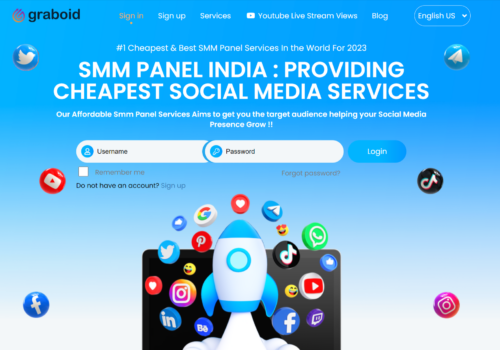In This Post, We’ll Talk About Social Media Marketing Tips For Beginners
For the past 10 years, I’ve worked as a social media consultant, and I’m still as enthralled by the potential of online communication as I was when I wrote my first tweet.
That’s not to suggest I’ve forgotten how it felt to go on this path in the first place. There may be a high learning curve at first, and with so many tools and platforms to select from, it’s easy to become overwhelmed.
This post is for you if you’re new to social media marketing or aren’t sure whether you’re doing it correctly. I’d want to share 10 of my finest tips with you in order to help you succeed.
10 Social Media Marketing Tips For Beginners
1. Establish SMART Social Media Objectives
It’s no secret that having objectives boosts your chances of social media success, yet it never fails to amaze me how few businesses give their social media goals any attention.
It’s difficult to tell how effective your social media marketing is doing without setting goals. Clear goals will not only help you move forward with your approach, but they will also function as established measures for tracking your success. Describe the particular objectives and outcomes you want to achieve through your social media efforts. These should be in line with your company’s objectives.
A goal must be specific, measurable, achievable, and realistic, as well as time-bound, in order to become a reality – these are known as SMART objectives. SMART objectives are one of the most well-known and widely used corporate goal-setting frameworks.
How To Set SMART Social Media Marketing Goals For Your Business (Recommended Reading)
2. Don’t Overstretch Yourself
It’s critical, especially if your resources are limited, that you concentrate your social media efforts where they will yield the most results. If your audience isn’t on a certain social network, it’s pointless to spend time there.
You should also avoid spreading yourself too thin by attempting to be everywhere at the same time. Every additional platform on which your company is involved necessitates more time and effort to connect with and generate specialized content for that platform.
Try answering the following questions before joining a social media site to help you decide which one is suitable for you.
I Will this platform assist me in meeting my marketing objectives?
(ii) Is this platform used by my target audience?
(iii) Is this platform compatible with the material I produce?
3. Get to Know Your Target Market
Gain a better grasp of your target market. What are their favorite internet hangout spots? What is the most relevant material for them? What sort of information do they require? How do they like to absorb that data? You may begin to form relationships with your audience and generate material that is relevant to them after you have a thorough understanding of them.
Insider Tip: Developing audience personas is an important element of planning your social media strategy and determining who you’re attempting to reach.
Here’s where you can get a copy of my audience persona template.
4. Examine what your competitors and industry peers are doing well.
Competitors and industry peers might provide useful information. Take a look at what your rivals are producing in terms of content. Determine which material is generating the most social shares, comments, and likes for them. Consider how you might take a piece of material they’ve made and give it your own distinctive spin.
5. Create a style guide for social media.
A social media style guide will assist you in communicating in a consistent manner across all social media channels. You should produce a style guide that explains exactly how postings should appear and read, whether you are a one-person company or have numerous employees publishing to your social media sites.
Make a move: The following should be defined in your style guide:
the social media presence of your company’s tone and voice;
the consistency of your writing style (format, spellings, etc.) in your postings;
the colors, logos, and fonts that you’ll employ;
What hashtags and emojis will you use?
6. Include images in every of your posts.
You’ve probably heard it before, but it bears repeating: visuals matter a great deal. According to Buffer’s study, visual material is 40 times more likely to be shared on social media than other sorts of information.
Include an image in every of your internet posts, even if they are only words. Maintain consistency across all of your photos to enhance brand identification and develop a strong visual identity by using the same colors, fonts, and layouts.
Check out my tutorial on how to make professional graphics.
7. Don’t Just Participate In Online Discussions
Don’t just add to the noise on the internet. Before you post something, think about if it would pass the re-share test. Why would I want to access this information by clicking on it? Why would I want to tell my friends and family about it?
“Before individuals share a piece of material, they evaluate its social currency,” says Jonah Berger, author of “Contagious: Why Things Catch On.” Commit to producing material that your audience will want to share because it is valuable or interesting to them.
8. Establish a posting schedule that is consistent.
Marketing on social media is a long-term commitment. To stay in front of your audience’s eyes and expand, you must post on a regular basis. And the more your audience hears from you, the more trust you may earn.
Set aside one day each month to plan out forthcoming events, holidays, and other topics for articles or social media posts. Then, to establish your content calendar, utilize a simple excel spreadsheet. Repeat the process with a separate spreadsheet for social media postings.
9. Post When Your Target Audience Is Available
Many guides may be found online if you search for the best posting times. You may use these suggestions as a starting point, but I recommend that you conduct your own research to determine which days and hours work best for your industry’s specific demographic.
When Is The Best Time To Post On Social Media In 2019? Recommended Reading: When Is The Best Time To Post On Social Media In 2019?
Don’t only “do social,” but “be social” as well.
Finally, we’ve all encountered people who will only tweet you if they want you to read, comment on, or retweet their information. Make sure you’re not one of them. Don’t earn a reputation for just being engaged when you have something to gain. Concentrate on developing online relationships. If you don’t care about your community, how can you expect others to care about yours?
Follow the 80/20 rule, which states that you should post 80 percent non-promotional material and 20 percent posts with calls to action for your own content.
Note- All Image Credits to elements.envato.com








